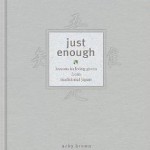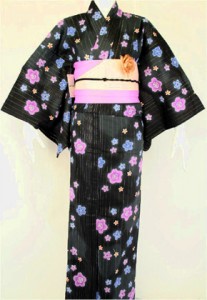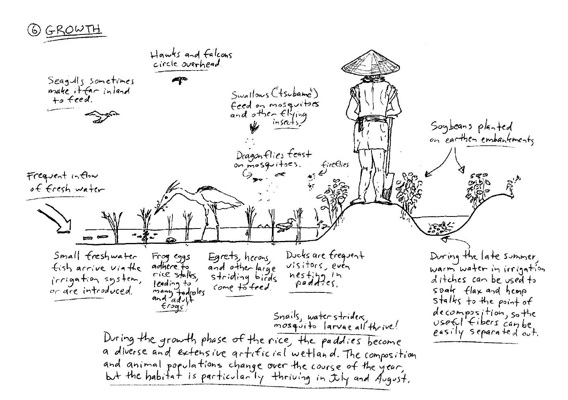 Just Enough – Lessons in living green from traditional Japan
Just Enough – Lessons in living green from traditional Japan
by A. Brown
ISBN: 4770030746
Edo society (1603-1867) was, a consequence of the Shogun‘s Tokugawa Ieasu‘s ascent to power, a society closed to foreign influence. Foreigners were secluded to Dejima, a 120 by 75 meters island in Nagasaki bay (now located in a land-filled area in the city centre), which represented the only link for the whole country to foreign goods, news and knowledge during that time.
In the centuries previous to the Edo period, Japan came to face dire, progressive environmental degradation, very akin to what we face on a global level in the present. Forests had been logged beyond restoration, with devastating consequences onto the ground water and hence the growing of crops, specifically rice. The population had grown beyond any point that the land, very mountainous over all, with planes already devastated by encroaching civilization, could healthily support. The environmental conditions of the country had deteriorated to a degree were, by all expectations, no recovery was possible, and collapse was imminent. And yet it did not collapse, but rather recovered.

But how did this society function? How could deep rural villages and a million metropolis such as Edo (old Tokyo) co-exists, without depleting nature of its resources? What legal, societal, cultural mechanisms and ethos’ were in place – and commonly accepted throughout?
“Just Enough – Lessons in living green from traditional Japan” (see also: book homepage) paints, through case study-like stories, a fascinating picture of a society substantially different from their contemporary counterpart in medieval Europe. A society that had recognised through dire experience that it had no choice but to trade-off between their own individual wish for consumption and comfort, and the survival of the the land they live on and society as a whole.
The author approaches the description from three different angles, each spanning one part of the book: the lives of the rural population, the design and function of the million inhabitant city Edo, and finally the lives of those living in Edo most notably the ruling samurai classes. Each part is divided into a case study description of what can be found on site – illustrated through the circumstances of one particular individual and his family -, followed by an in-depth analysis of the underlying concepts, reasons, thoughts and traditions.
In his conclusions, the author addresses three categories of measures, roughly in agreement with what the global sustainability community suggest:
-
those that have the greatest quick positive impact
-
those that are essential but will only show results after years of effort, and finally
-
those that experts are still not entirely sure of their long-term positive impact.
While suggestions for city dwellers are readily accessible to us – e.g. using foods preserved without refrigeration and that can be consumed without cooking, over setting up your own even if tiny garden, and compost your kitchen scraps and garden clippings to use them later to fertilize your garden, to try and make your life as locally-sourced as possible, to treat and use manure (human waste) as the valuable fertilizer it indeed is – the chapter on the rural life-style, and it’s links to city life, is equally if not more insightful:
For instance, everyone knows the famous, terraced layout of Asian rice paddies. The layout in reality implies that farming generally will need to happen manually – modern mechanical equipment is rarely suitable to this kind of agriculture. Yet – the trade off is worth it, if sufficient consideration is given of how said paddies are being watered: With very few exceptions, gravity will do the job. The water shed is further up than the top rice paddy, and by merely opening a barrier, gravity will carry the water down hill, traversing the upper levels and gradually progressing to the paddies at the bottom of the terrace. A brilliantly simple, ecologic solution to an otherwise back-braking labour-intensive activity.

Beyond food, the rice paddies are a natural reservoir for insects and birds, and their enclosures allow edible plants and other crops to grow. Fine rice straw is used as “detergent” for washing dishes (when chopped), to fill futon mattresses, to make tatamis (traditional Japanese mats used for room flooring), as kindling, to weave baskets which again are used to gather wood, fruits and plants – and if of no better use any more, becomes mulch which again is fertilizer for the rice paddies.
Rice as the main staple of both the rural population as well as city folks, is an excellent example of “closed loop agriculture”. Japanese rice paddies were, had to be, high-yielding. Each farmer had to surrender up to one half of each rice harvest as tax (meaning: for feeding cities like Tokyo and the ruling Samurai classes). The farmers themselves subsisted on about one fourth of their harvest, as well as on the extra vegetables they grew in their back yard, as well as on the fruits and plants they gathered from spring to autumn, and that when pickled added a welcome change to the menu in winter. The remainder was sold on the open market, and generated the cash needed to buy external services, such as carpentry, that could not be obtained by swapping them for home-made green cottage crafts or labour.
“Just enough” outlines numerous facets of how an economic system is in reality based upon everyday decisions, behaviours, ethos and manners. The overarching theme that comes to bare through the detailed descriptions provided by the author, and supported by numerous sketches and drawings, is the interdependence of communities, the environment and the land we live on. This interdependence transcends the borders of a mountain village or those of large metropolitan area.
The one question that the author, however, leaves upon us to answer is: How can we apply the lessons learnt in the book, and transfer them to our modern setting? Some aspects, such as the creation of kitchen gardens, are immediately transferable. But the breadth and width of the material presented gives ample opportunity to use our creativity to do better than “just” that.
This book is available from your nearest book store, as well as online from Amazon.

